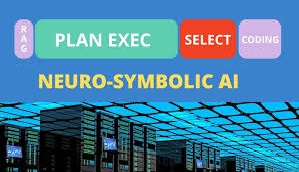
Introduction:
This section delves into cutting-edge research focused on the integration of neural models with graph databases and knowledge graphs, aiming to enhance AI reasoning capabilities. The primary emphasis is on improving AI performance in complex domains, with a particular focus on biomedicine. The discussion highlights three recent and significant studies conducted by different institutions, each exploring various facets of this innovative approach to AI development.
These studies collectively demonstrate the potential of combining neural networks’ pattern recognition abilities with the structured data representation of graph databases. By leveraging this synergy, researchers aim to create more robust and efficient AI systems capable of handling intricate reasoning tasks in specialized fields. The exploration of this integration is particularly promising in biomedicine, where the ability to process and interpret vast amounts of interconnected data is crucial for advancing medical research and improving patient care.
This approach leverages the strengths of both neural networks, which excel at learning complex patterns from data, and graph databases, which efficiently represent and reason about relationships between entities.
Key Research Directions:
- Neural-Symbolic Reasoning:
- Combining Neural Networks and Symbolic Logic: Explore methods to integrate neural networks with symbolic logic, enabling AI systems to reason about complex relationships and derive conclusions based on formal rules.
- Hybrid Architectures: Develop hybrid architectures that combine neural networks with rule-based systems, allowing for both inductive and deductive reasoning.
- Graph Neural Networks (GNNs):
- Advanced GNN Architectures: Research more sophisticated GNN architectures, such as attention-based GNNs and hierarchical GNNs, to capture intricate relationships and improve reasoning performance.
- Knowledge Graph Embedding: Explore methods to embed knowledge graphs into continuous vector spaces, enabling neural networks to effectively process and reason about graph-structured data.
- Knowledge Graph Completion:
- Predicting Missing Links: Develop techniques to predict missing links in knowledge graphs, expanding their coverage and improving reasoning capabilities.
- Reasoning over Complex Queries: Research methods to enable AI systems to reason over complex queries involving multiple entities and relationships.
- Explainable AI (XAI):
- Interpreting Neural Network Reasoning: Develop techniques to explain the reasoning process of neural networks, making AI systems more transparent and trustworthy.
- Visualizing Knowledge Graph Reasoning: Explore methods to visualize the reasoning process over knowledge graphs, enhancing understanding and interpretability.
- Applications:
- Drug Discovery: Utilize neural-symbolic reasoning and knowledge graphs to accelerate drug discovery by identifying potential drug candidates and understanding their interactions.
- Question Answering: Develop AI systems that can answer complex questions by effectively reasoning over knowledge graphs and leveraging natural language understanding.
- Recommendation Systems: Enhance recommendation systems by incorporating knowledge graph information to provide more personalized and relevant recommendations.
Video about the Neuro-Symbolic Graph Reasoning:
Related Sections in the video:
- Overview of Recent Research:
- Empowering domain-specific LLMs with graph-oriented databases
- Neuro-symbolic entity alignment for combining knowledge graphs
- Knowledge graph-based agents for complex medical queries
- Common Theme: The studies share a focus on combining neural models with graph databases to improve explainability, reduce latency, and boost overall system performance.
- Neuro-Symbolic Approach:
- Outperforms purely symbolic or neural methodologies
- Combines reasoning capabilities of symbolic AI with pattern recognition of neural LLMs
- Three-Step Process: a. Data processing with neural models b. Structuring knowledge with symbolic systems c. Enhancing knowledge graphs with neuro-symbolic insights
- Benefits:
- Enhanced knowledge base
- Actionable insights
- Transparent and trustworthy system
- Graph Structures in AI:
- Difference between pure mathematical graphs and AI graph databases
- Addition of information to nodes and edges in AI graphs
- Learning Logical Rules:
- System’s ability to deduce new rules from data
- Example of inferring new collaborations based on existing data
- Practical Example:
- Converting simple text to structured format (JSON or graph-based)
- Applying neural and symbolic systems for deeper understanding
- Integrating insights for comprehensive analysis
Challenges and Future Directions:
- Scalability: Addressing the scalability challenges of integrating neural models with large-scale knowledge graphs.
- Data Quality: Ensuring the quality and completeness of knowledge graphs to support effective reasoning.
- Evaluation Metrics: Developing appropriate evaluation metrics to assess the performance of neural-symbolic reasoning systems.
- Real-world Applications: Identifying and addressing the challenges of deploying neural-symbolic reasoning systems in real-world scenarios.
By addressing these challenges and continuing research in these areas, we can expect significant advancements in AI reasoning capabilities and their applications across various domains.
Conclusion:
The integration of neural and symbolic AI systems, known as neuro-symbolic systems, offers a powerful approach to handling complex data and reasoning tasks. This approach combines the pattern recognition strengths of machine learning models with the logical reasoning capabilities of rule-based systems, resulting in more accurate, interpretable, and adaptable AI solutions.
Key Takeaways:
- Neuro-symbolic integration enhances AI’s ability to process and understand complex data.
- The approach combines pattern recognition with logical reasoning for improved accuracy and explainability.
- This technology has significant potential in fields like healthcare and biomedicine.
- Major institutions and companies are investing in this area of research.
- The process involves structuring data, applying neural and symbolic systems, and integrating insights.


